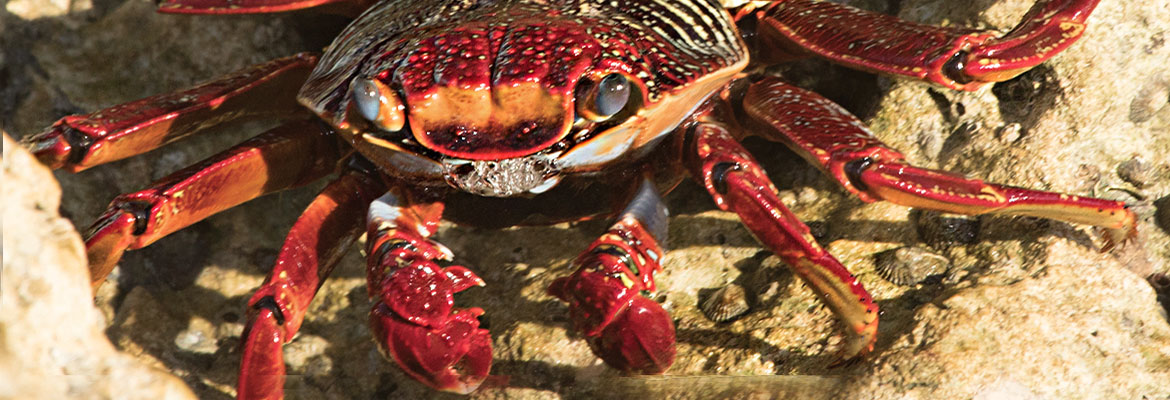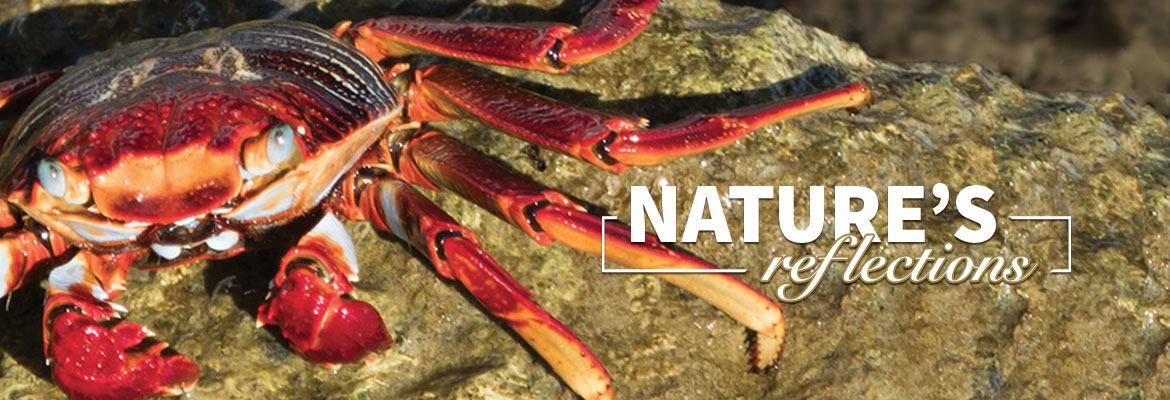Nature’s Reflections – Salty Lightfoot Crab
Salty Lightfoot Crab
Colorful, feisty crab lives and hunts in rock crevices
The Salty Lightfoot crab, (Grapsus grapsus) also called the red rock crab, is found on rocky beaches in the Americas on both the Atlantic and Pacific coastlines. It is a common crab on the Galapagos and along the Atlantic coast of Africa. In Florida, it can be found along the Atlantic coastline, living in the rocks of the jetties.
The Salty Lightfoot crab is a bright multi-colored crustacean. Its body, called the carapace, is three to four inches across and bright red with black, orange and yellow markings. It has ten jointed legs with a bright orange or yellow tip on each leg. Two legs are claws, called pinchers that are larger and are more vivid red. It has two large bluish eyes and four antennae. Males tend to be slightly smaller than females and the right claw is slightly larger than the left. The underbelly is pale white. Young Salty Lightfoot crabs are darker-colored.
Salty Lightfoot crabs can move quickly and demonstrate remarkable agility clinging to the rocks while powerful waves crash over them. It will eat practically anything it can get, from algae to dead fish. It is known to clean the beach of broken eggs and bird and bat droppings.

While Salty serves an important role as predator and beach janitor, it is also a vital part of the ecosystem as prey for many animals including large birds, octopuses, sea turtles, etc. In addition, fishermen use the species for bait and others become part of the pet trade. Average lifespan in captivity is seven years.
Breeding occurs year round. Males battle for females in a crab-style boxing match and the victor wins brief access to the female. Males and females may have multiple partners over a breeding season. After mating both return to a solitary life. Eggs remain suspended in a female’s belly until hatching in about three weeks, normally during a full moon. Females may bear twenty to a hundred offspring in a clutch. Once the young drop into the water they are on their own. Females molt after hatching the eggs and are ready to mate again in about three weeks.
Column & photo by: Sandi Staton






